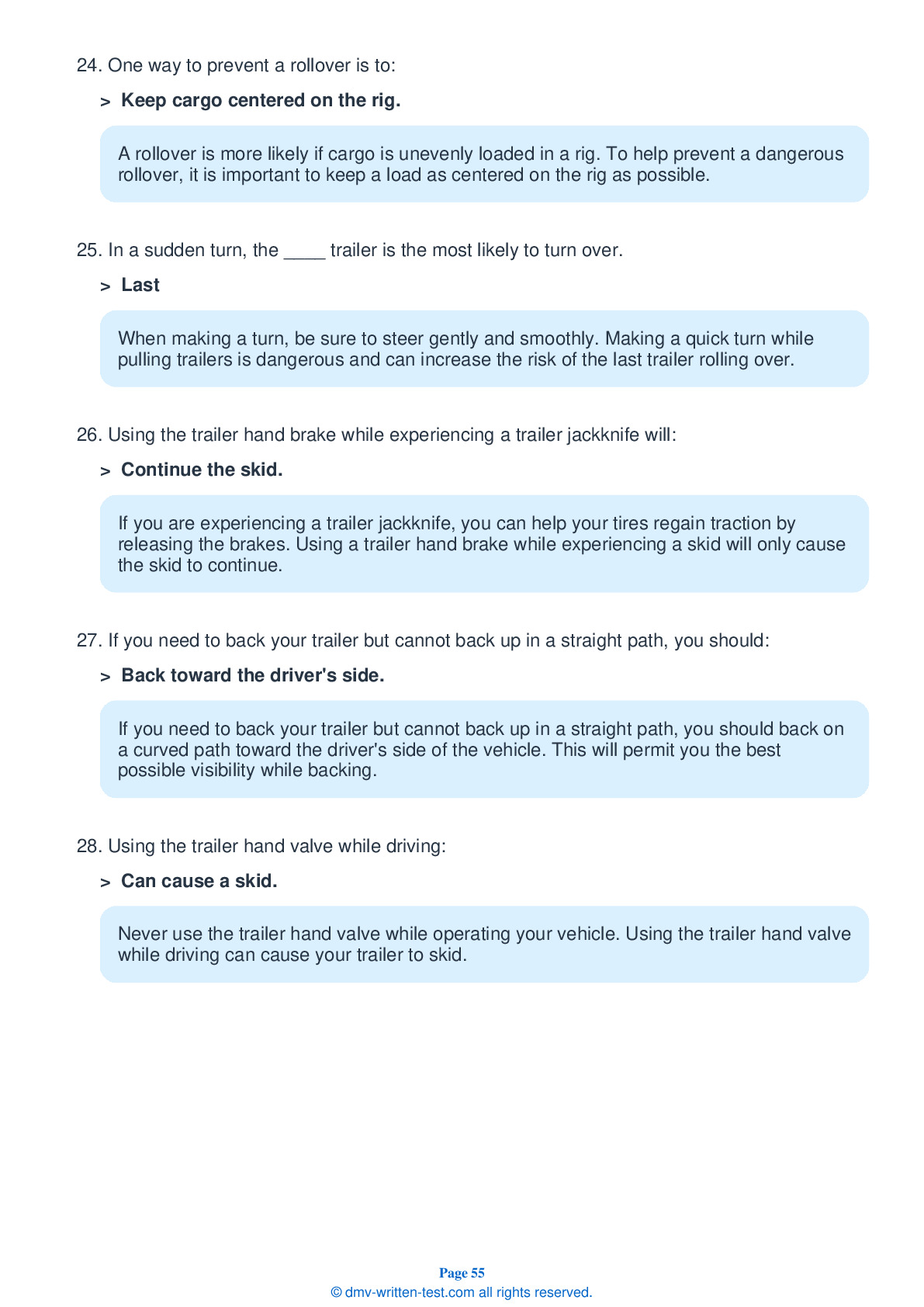Combination
All applicants who are applying for a Class A CDL should be prepared to take the Combination test. This test covers information found in Section 6 of the Commercial Driver License Manual. Section 6 provides the information needed to safely operate tractor-trailers, doubles, triples, and straight trucks with trailers. The test is made up of 30 multiple-choice questions, and applicants will need to correctly answer a minimum of 24 questions to pass. The Combination test is not a replacement for the Double/Triple endorsement test.
Number of Question
Passing Score
1. The best way to notice if a trailer has begun to skid is to:
Explanation
The easiest way to become aware that your trailer has begun to skid is to observe it in your mirrors. Checking your trailer in your mirrors will also allow you to spot any skidding at the earliest possible moment.
2. A loss of air pressure in the emergency line will cause:
Explanation
The tractor protection valve keeps air in the trailer's braking system should the trailer break away or develop a leak. A loss of air pressure in the emergency line will cause the tractor protection valve to open and the emergency trailer brakes to activate.
3. Place the trailer air supply control in its "emergency" position to test:
Explanation
Be sure to test the trailer emergency brakes before beginning a trip. After ensuring that the trailer rolls freely, you can test the emergency brakes by pulling out the trailer air supply control, or placing it in the "emergency" position. Pull forward slightly with the tractor and make sure the trailer does not move.
4. What is a bobtail tractor?
Explanation
Tractors without semi-trailers are referred to as bobtail tractors. Operating a bobtail tractor requires drivers to exercise caution.
5. A tractor protection valve is:
Explanation
On combination vehicles with air brakes, the tractor protection valve keeps air in the tractor or truck brake system, should the trailer develop a bad leak or break away from the tractor.
6. Proper coupling technique:
Explanation
Knowing proper coupling and uncoupling technique is fundamental to the safe operation of combination vehicles. Improper coupling can be very dangerous.
7. In an empty combination vehicle, the stiff suspension springs and strong brakes will have:
Explanation
An empty combination vehicle will come to a complete stop more slowly than a fully-loaded vehicle. With less weight in a trailer, the stiff suspension springs and strong brakes will have lower traction than they would if the vehicle carried more weight.
8. Rollovers happen when:
Explanation




